The Suzuki Swift is easily a contender for New Zealand’s most prolific small hatch.
Since the familiar flat-roofed hatch arrived in 2004, the Swift built a reputation of being a reliable, charismatic, small hatchback. Its subsequent popularity saw the model becoming a staple mainstay in New Zealand’s vehicle landscape. Survey any supermarket car park, you’re almost guaranteed to spot one.
This same popularity also embellished it with a few stereotypes, but I suppose that’s one metric for its success, isn’t it?
The Swift Sport can be considered the halo model of the range, aiming to offer a taste of hot-hatch thrills, plus a comprehensive equipment list for those with a $30,000 budget.
Fred loved his drive of the Swift Sport a back in 2018 and went on to win DriveLife’s Best Value Car of the Year. The 2020/21 model year has seen a handful of updates, mainly on the safety front, which has lifted the price around a grand and a half.
Let’s determine if the Swift Sport still represents good value three years on.
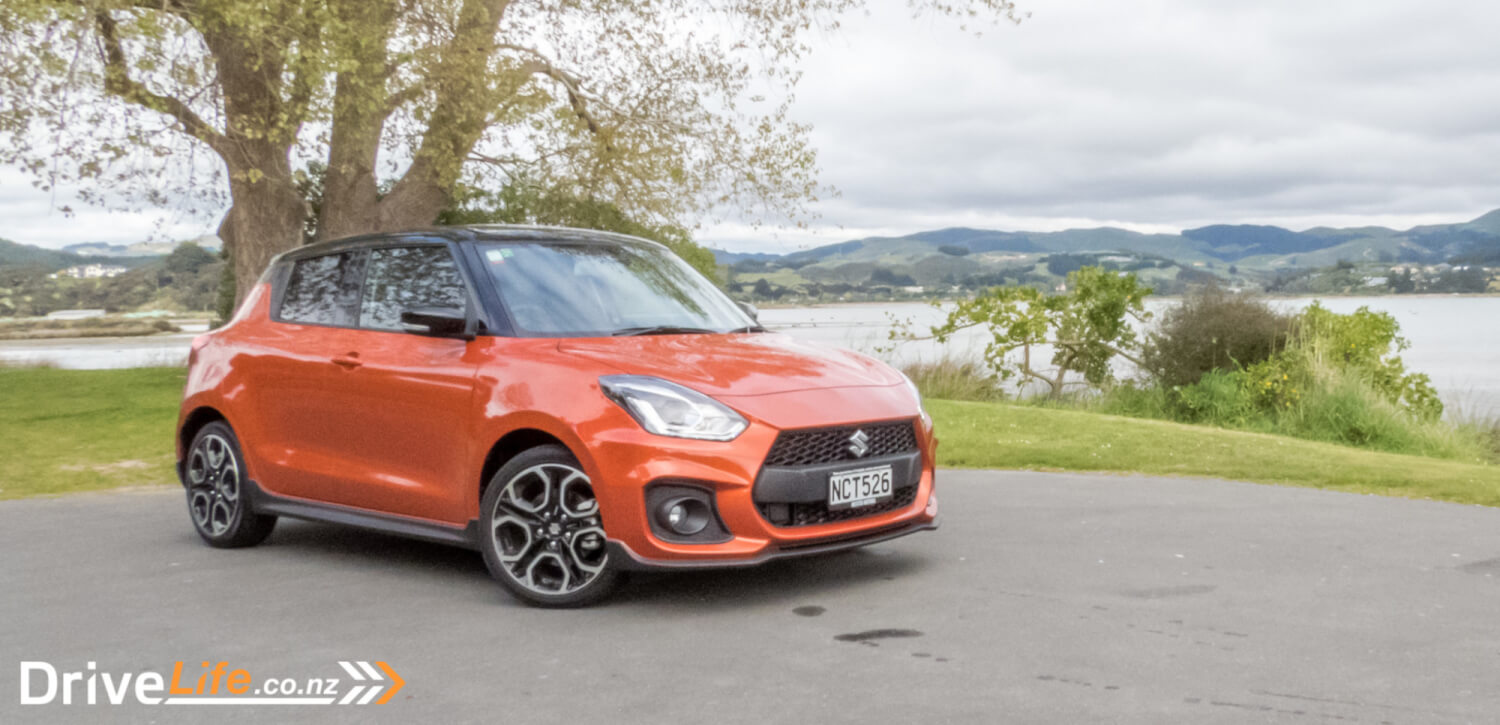
What’s In The 2021 Suzuki Swift Range?
The popularity of the Suzuki Swift has seen its range multiply over the years. So much so, that the Suzuki Swift is offered in three product lines consisting of the Swift, Swift Hybrid, and Swift Sport.
According to Suzuki’s website, there’s a total of 11 different models! But you can easily half this once you eliminate transmission and paint options, leaving only a few core models.
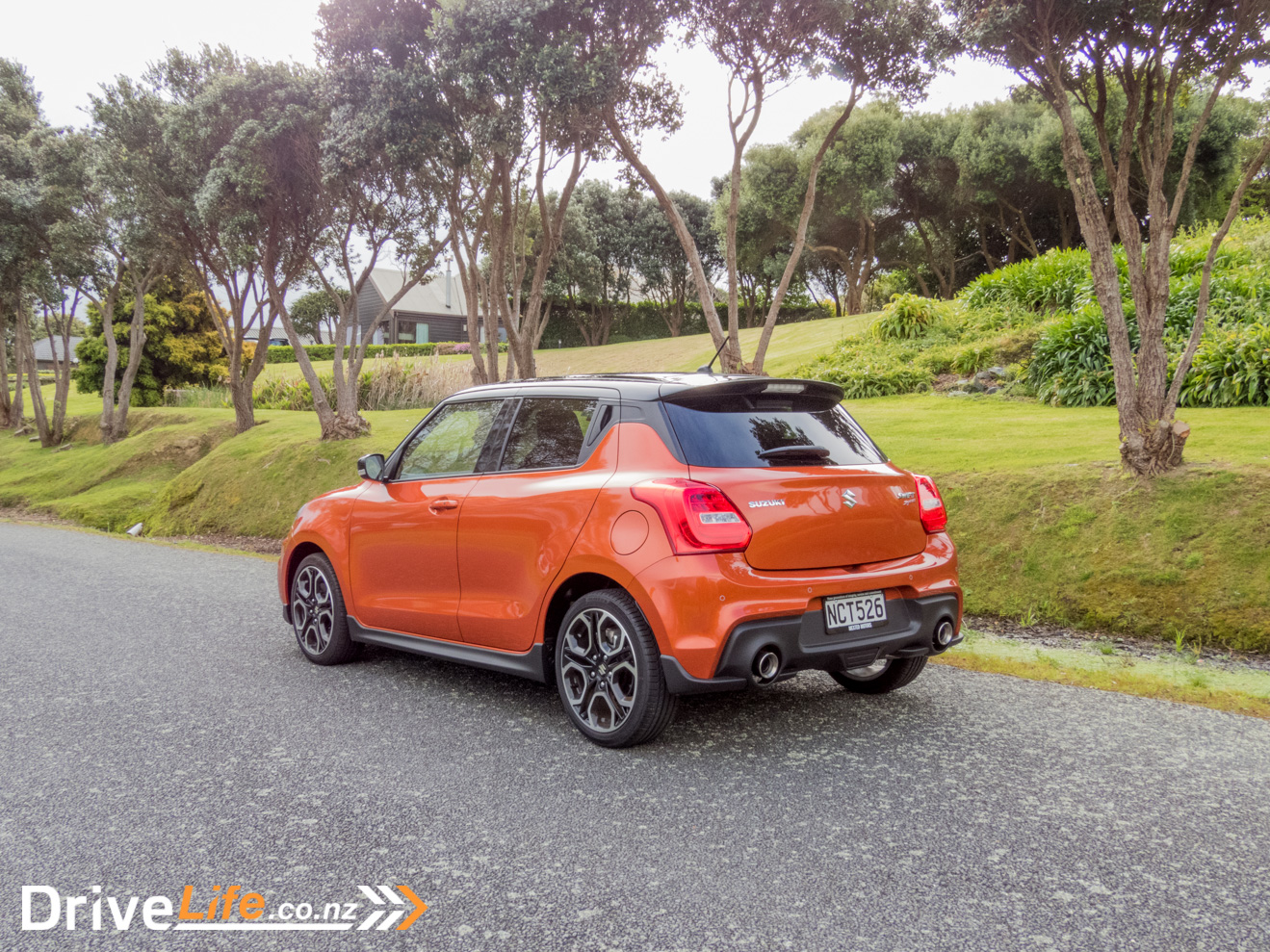
The Swift range starts with the GL model, priced at $20,750 for a manual and $22,990 for an CVT auto. The GL is fitted with a 1.2-litre petrol motor, which produces 66kW of power and 120Nm of torque.
Up from the GL is the RS, priced from $27,990. The RS has a 1.0-litre, three-cylinder turbo-petrol motor and a 6-speed auto transmission, but no manual option. This combo produces 82kW of power and 160Nm of torque.
Next rung over, we have the Swift Hybrid, which starts at $26,500 for the GLX. Move up a model to the LTD, and that will cost from $28,500. Both use a 1.2-litre petrol motor, which puts out 61kW of power and 107Nm of torque.
Up next is the Swift Sport. The choices for the Swift Sport are simple. You can have it with either a manual or 6-speed automatic transmission, and with-or-without two-tone paint. The range starts with a manual from $29,990. Our test vehicle is an Automatic, with two-tone paint (Orange with a Black Roof), which will set you back $31,990.
Being the spiciest Swift of the bunch, the Swift Sport runs Suzuki’s Boosterjet, 1.4-litre turbocharged petrol engine, which produces 103kW of power and 230Nm of torque.
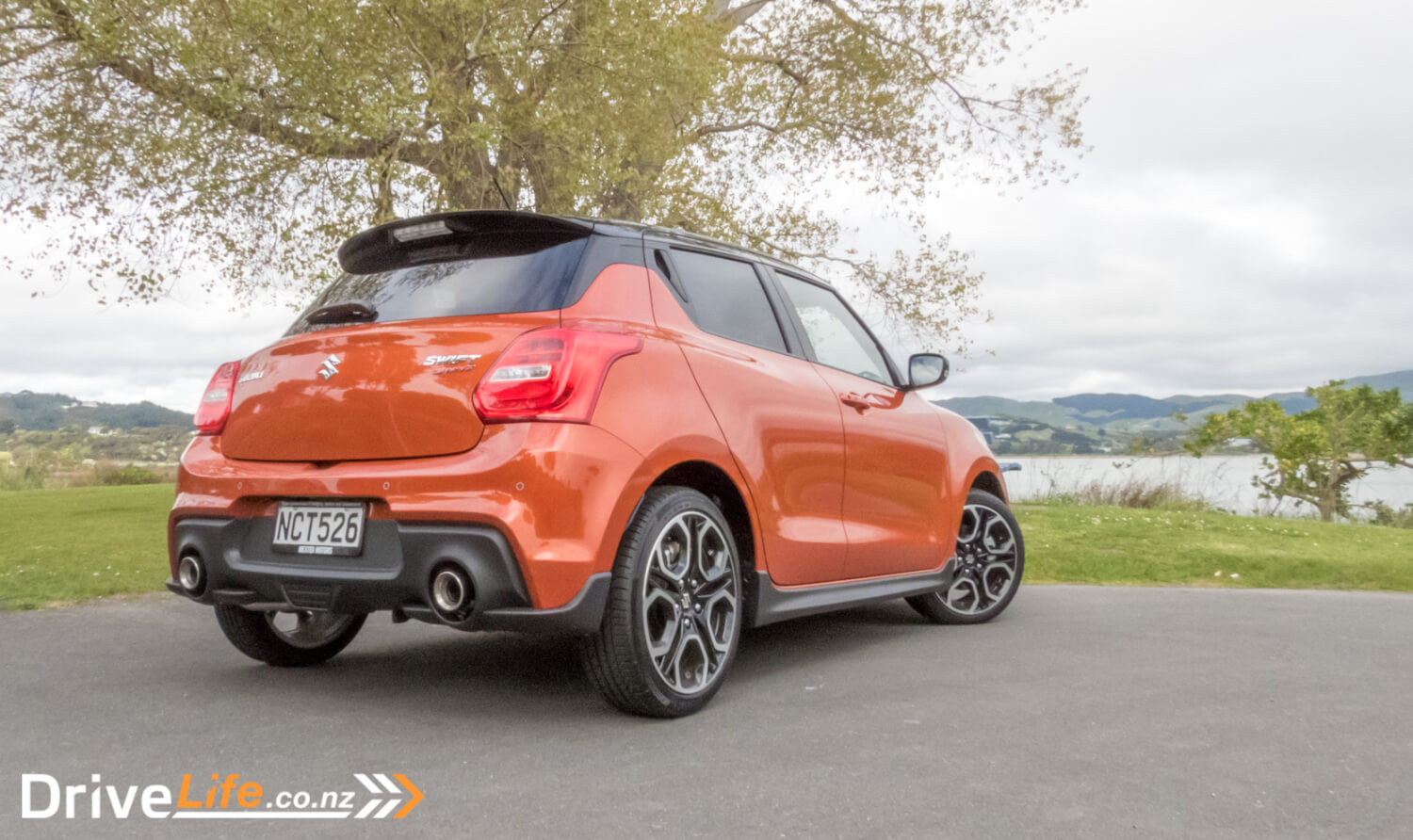
Feature-wise, the Swift Sport offers 17” alloys, touch infotainment with Apple CarPlay and Android Auto, a six-speaker audio system, Adaptive Cruise Control, Hill Hold Control, Sports Seats, alloy pedals, rear privacy glass, parking sensors, keyless entry and start, climate AC, electric and heated folding mirrors, LED projector headlamps, auto-on and auto levelling headlamps, and high beam assist.
The Swift Sport has all the equipment to accompany its 5-star safety rating, including 6 airbags, Lane Departure Warning, Blind Spot Monitoring, Rear cross traffic alert, ISOFIX points, and weaving alert.
There are six core colour offerings for the Swift Sport range. These are; Champion Yellow, Super Black, Speedy Blue, Burning Red, Pure White, Premium Silver. Opting for the two-tone paint option gives you a black roof and whittles your body colour options down to three, but unlocks the seventh special colour, Flame Orange. Two-tone paint is an optional extra – around $500 extra.
For more information on the Suzuki Swift Sport, visit the Suzuki New Zealand website.
First Impressions Of The 2021 Suzuki Swift Sport
The Suzuki Swift has always been a distinctive car, but they never really sit on my radar. Perhaps because there’s so many of them around?
However, this current generation of Swift was the first to grab my attention when it was released. It’s always looked sharp in my eyes, particularly when the Swift Sport was shown in Suzuki’s bold Champion Yellow. I enjoy the classic floating roof design and how the rear door handles integrate into the C-pillar. I also like the Swift Sport’s 17’’ alloys, the LED headlamps, and I especially like those proper dual exhaust tips.
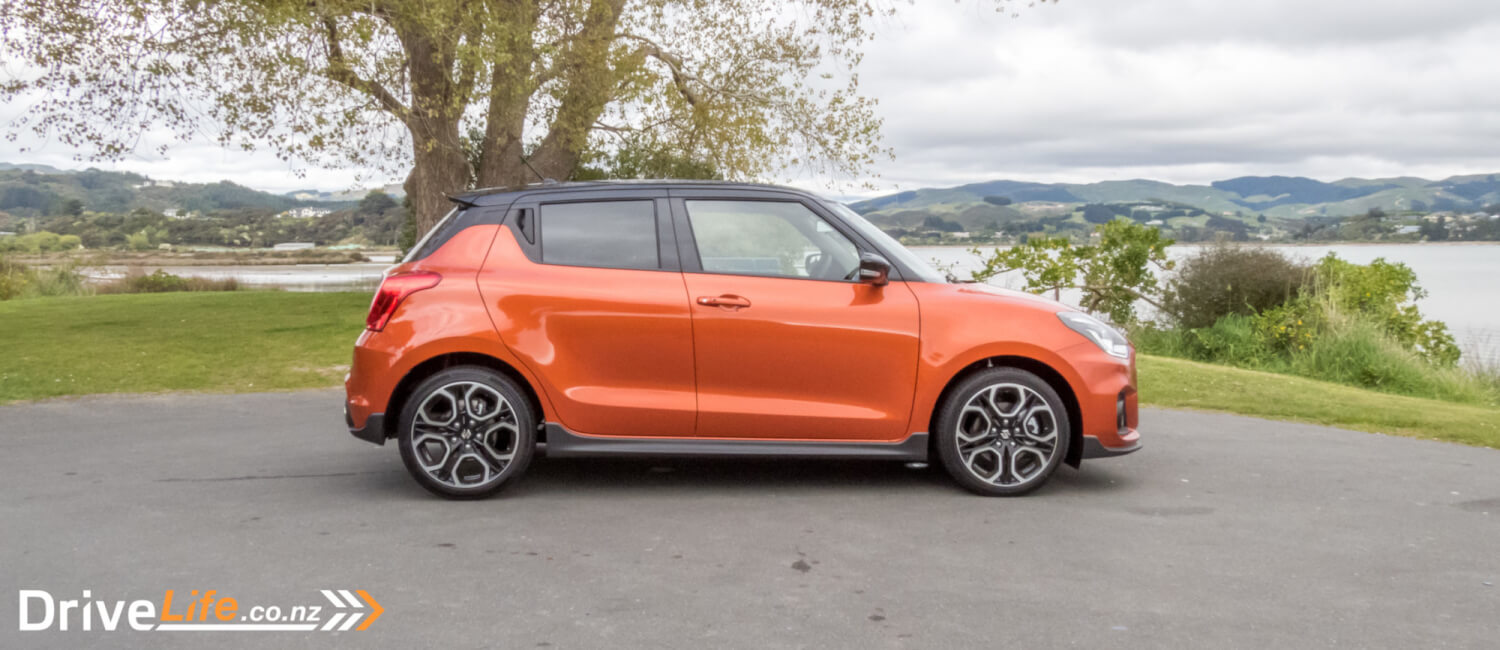
Fast forward to 2020, the Swift Sport still fits in. Although, I can appreciate the argument of those that are saying it’s starting to age, and I’d also agree that there are some slightly bloated angles.
But overall, I genuinely like the styling of the Swift Sport. I also rate the rich Flame Orange colour on our press vehicle. You’ll appreciate it even more in the flesh.
Yet, you can only get this colour as a two-tone option, wearing a black roof. Interesting choice by Suzuki.
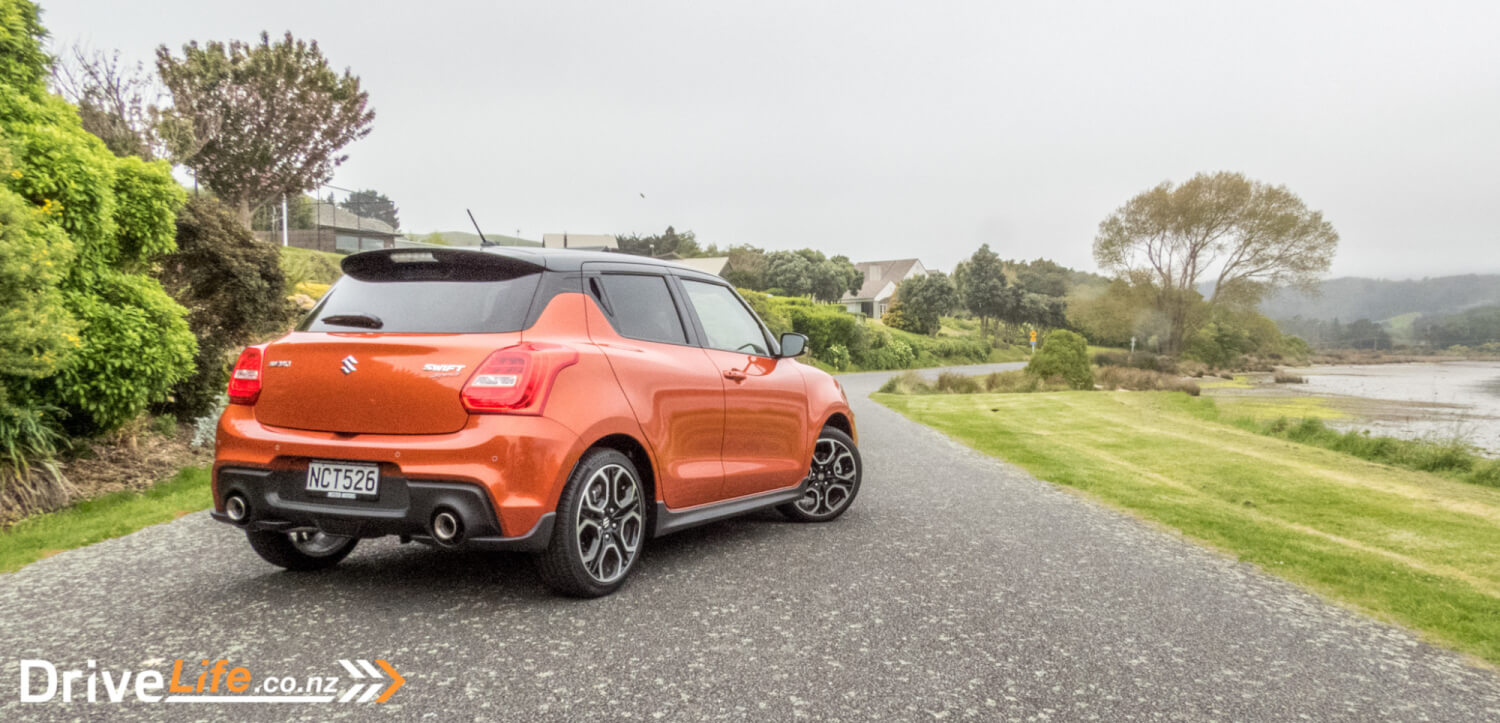
What’s The Interior Like On A 2021 Suzuki Swift Sport?
Climbing into the cabin of the Swift Sport, you’re immediately gripped by the Swift’s hugging sports seats. ‘Hugging’ requires a bit of emphasis – these seats are tightly bolstered, more than any other seat I’ve experienced in a compact hatch.
Aside from making you feel guilty about your lunch choices, the seats are comfortable and supportive once you’ve nestled yourself in. They also look sharp, being tall-backed, with integrated headrests and red contrast stitching. Overall, they’re a big lift for the Swift Sport’s interior.
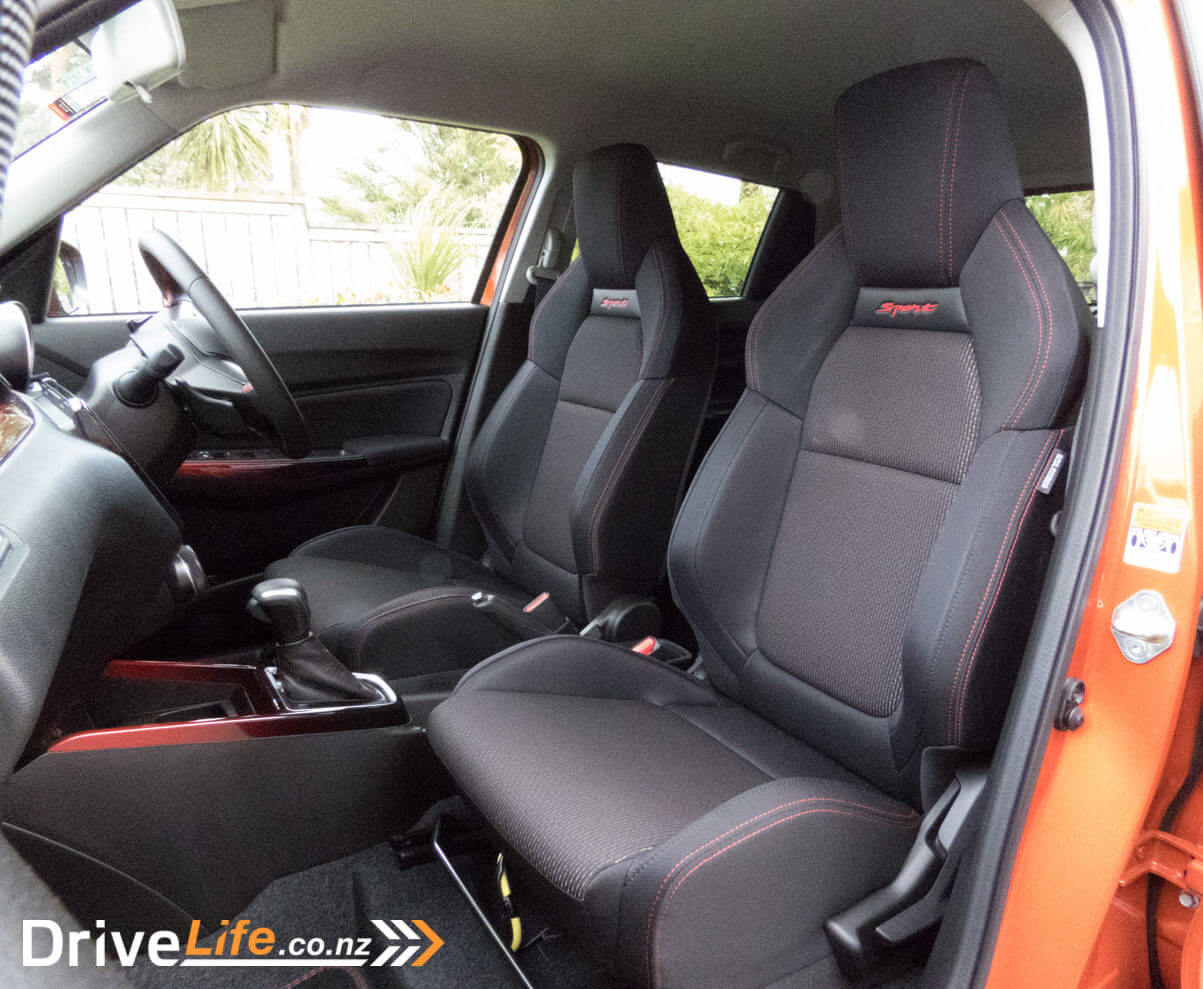
Begin surveying the rest of the interior, and you may feel a bit led-on by the sporty seats. But remember that this is a $30,000 hatchback.
The dash format shared with the rest of Swift range, which means plenty of hard black plastics are applied. Suzuki has attempted to brighten up the interior of the Swift Sport with a number of trim pieces, which have an … erm … an interesting red-to-black transition effect.
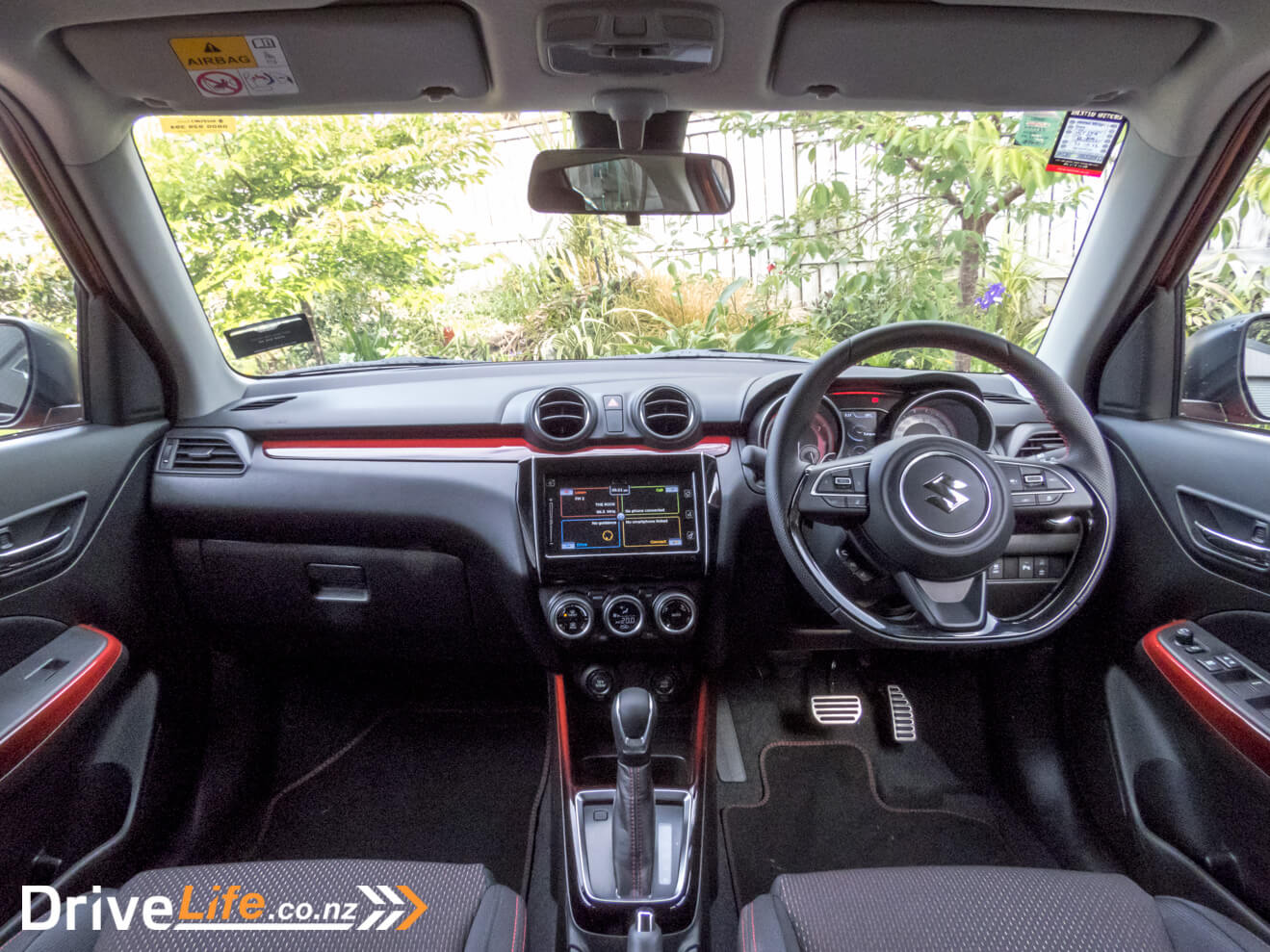
The trims seem cheap as a stand-alone piece, but they do serve their purpose of livening up the interior against all the black surfaces. If you don’t pay too much attention to the trims directly, you’ll appreciate them more.
Despite the hard plastics and some trim choices, I cannot fault the Swift Sport’s build quality. Nothing appeared noticeably flimsy, plus many key touch points were, at minimum, of acceptable quality.
In front is the Swift’s sharp leather-wrapped steering wheel, finished with red contrast stitching. Gloss black plastic wraps the 8-4 o’clock segment of the wheel, which looks nice, but I suspect it could get scuffed up over time, as this sort of plastic usually would.
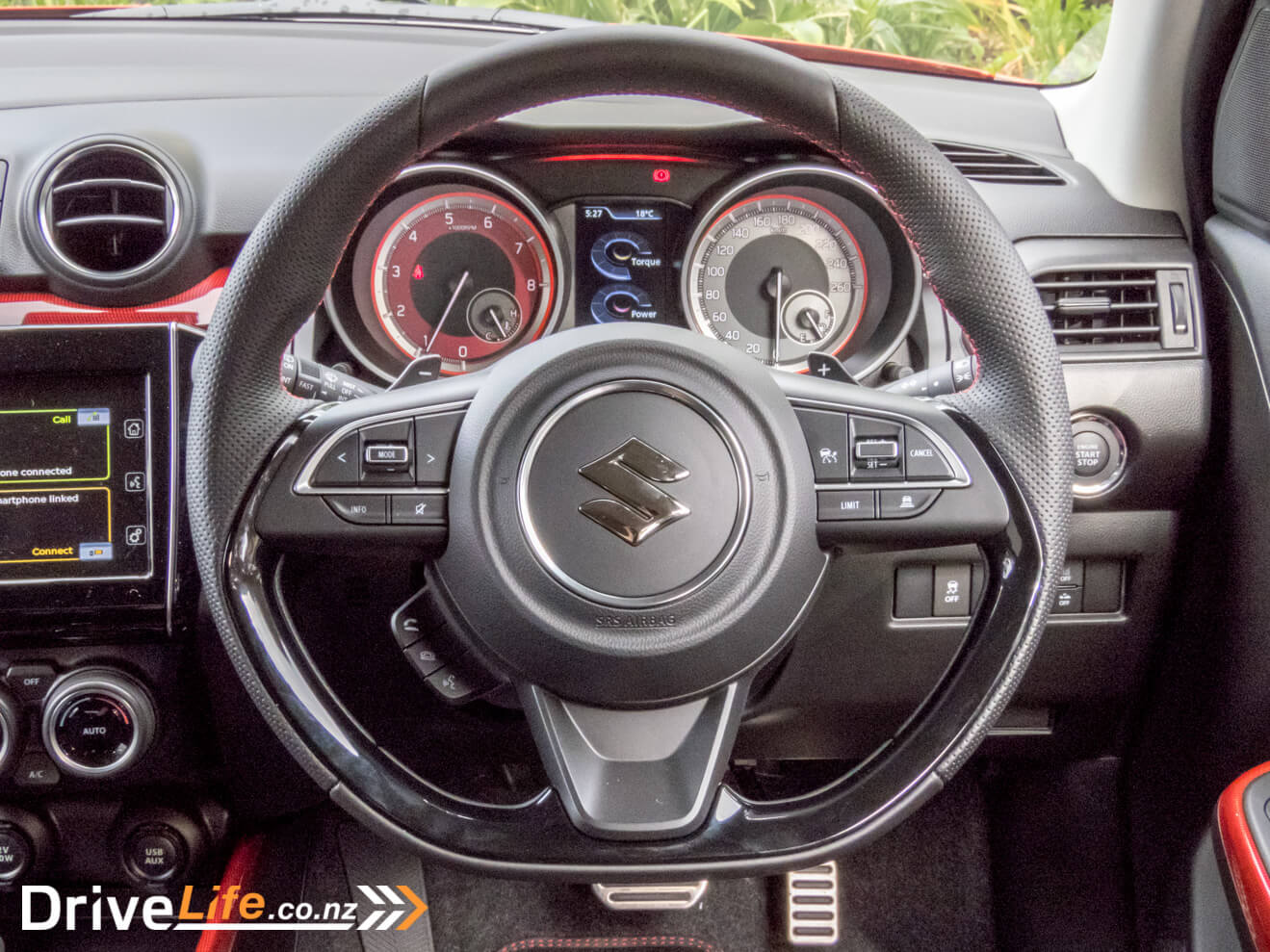
Ahead of the steering wheel is the Swift Sport’s instrument cluster, jazzed up with a few splashes of red on the dials, plus red lighting illuminating the border of the dials and instrument cluster itself. The centre display also features a few fun little graphics, including power and torque graphs, a little motion meter, plus a (fake) boost gauge. Although a tad gimmicky, I like the priorities Suzuki is signalling with these. If this doesn’t do anything for you, perhaps the alloy pedals below will.
Directing attention to the centre, the Swift Sport uses the same 7’’ infotainment screen Suzuki uses for the majority of its model range. The infotainment has a simple interface, plus it’s fairly responsive to the touch. The unit appears to be slightly on the older side, which means that the screen resolution isn’t it’s best quality, but Suzuki has packaged in Apple Carplay and Android Auto for those with the preference.
On the subject of resolution, where the Swift Sport falls down is with its reverse camera. Its display is grainy and not up to 2021’s standards.
I also dislike that there’s no volume knob, instead, there’s a touch bar to the left of the screen, which isn’t as responsive as it should be. Fortunately, you can just default to the steering wheel controls.
Below the infotainment are the climate controls, which are set out as three circular gauges. Fan speed and temperature are controlled by dials bordering the left and right gauges, while the middle gauge has a digital readout for the air temperature. It’s quite a cool solution for the climate controls, relative to the usual physical turn dials you’ll find in lower trim Swift models.
The rear seats are seldom the prime real estate of any car, yet alone inside of a small hatchback. However, I was pleasantly surprised by the amount of space in the back of the Swift. There’s plenty of legroom, and the floating roof design means the body is virtually a square, ergo, headroom is ample too. In short, you can comfortably accommodate adults in the back of the Swift.
The seats drop to a 60/40 split, offering a decent volume of boot space. However, there’s no spare tyre back here, only a puncture sealant kit surrounded by a huge piece of polystyrene. Fred pointed this out back in 2018, and I agree that it’s a missed opportunity for Suzuki to use the space for additional storage, assuming they’re intending on not providing a spare in the future.
Finally, a particular quirk of the Swift is that the central locking defaults to a two-click unlock. A single click will only give you the drivers door. This feature is a pain-in-the-arse if you’re not used to it, but Suzuki does allow you to switch this off.
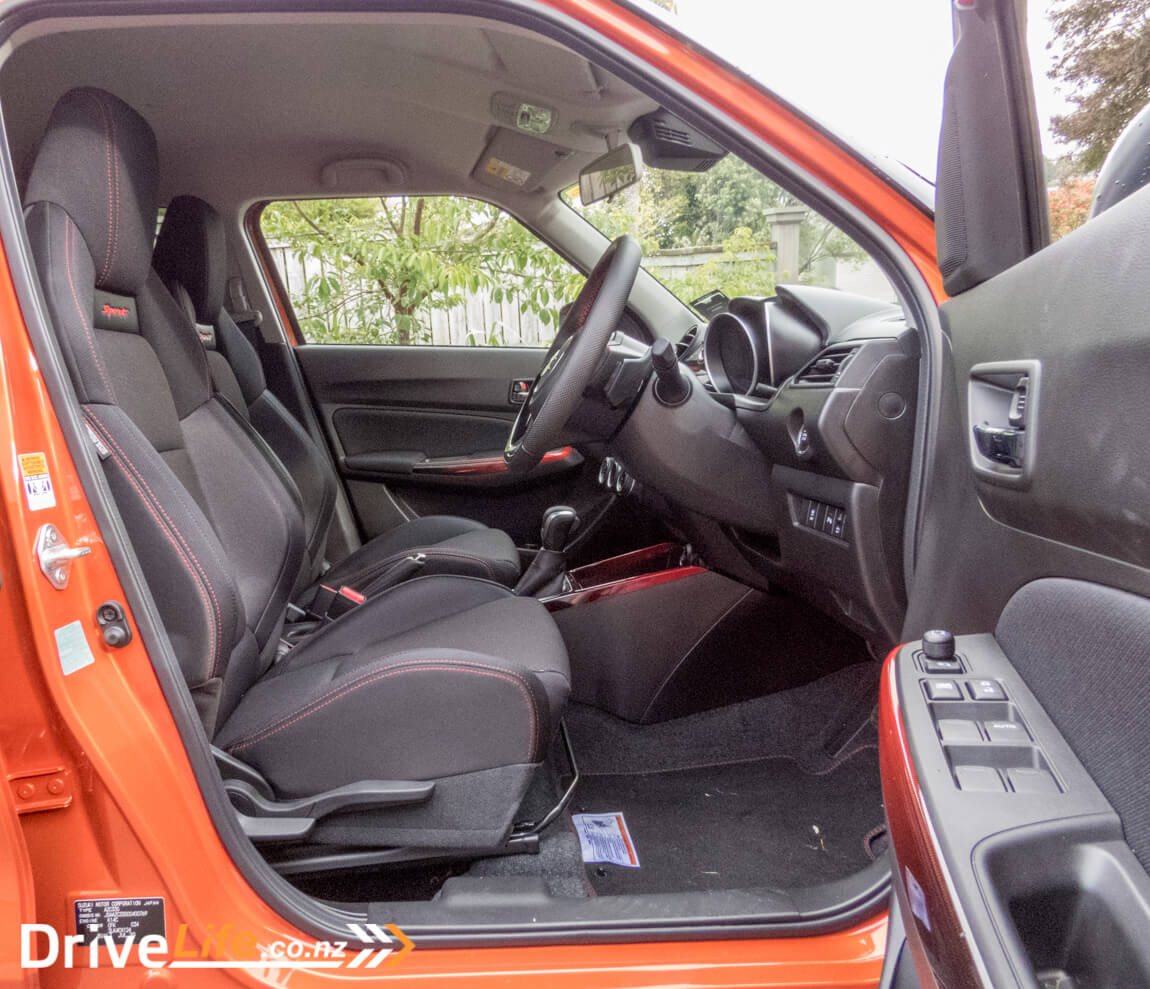
Overall, the interior of the Swift Sport is virtually unchanged since we last tested one, yet it hasn’t aged much and still fits in well for 2021. The build quality, the front sport seats, and the rear passenger space are the obvious interior strengths, yet some features are starting to show their age, plus the lack of a spare tyre is a disappointment given the segment of vehicle we’re dealing in.
Regardless, it earns a thumbs-up from my perspective.
What’s The 2021 Suzuki Swift Sport Like To Drive?
On paper, the specs of the Swift Sport seem a tad underwhelming. Only 103kW? You call this a hot hat…
Stop there.
Yes. 103kW isn’t much inside the minds of the armchair enthusiast – but there’s the spec-sheet, and then there’s reality.
In reality, the Swift Sport is pretty darn brisk. No, actually.
This is because the Swift Sport is a featherweight. It only weighs 990kg in our trim, shaving off another 20kg if you opt for a manual gearbox. For context, an original 1990’s Mazda MX5 weighs-in at 960kg.
Then, cram Suzuki’s 1.4L turbocharged booster-jet engine into that frame, which is the same engine Suzuki uses in their mid-size SUV, the Suzuki Vitara. The combination of 103kW of power, 230Nm of torque, all wrapped up in a light body is excellent. It’ll blitz most of the $30,000 hatchback crowd and make them seem completely lethargic performance wise.
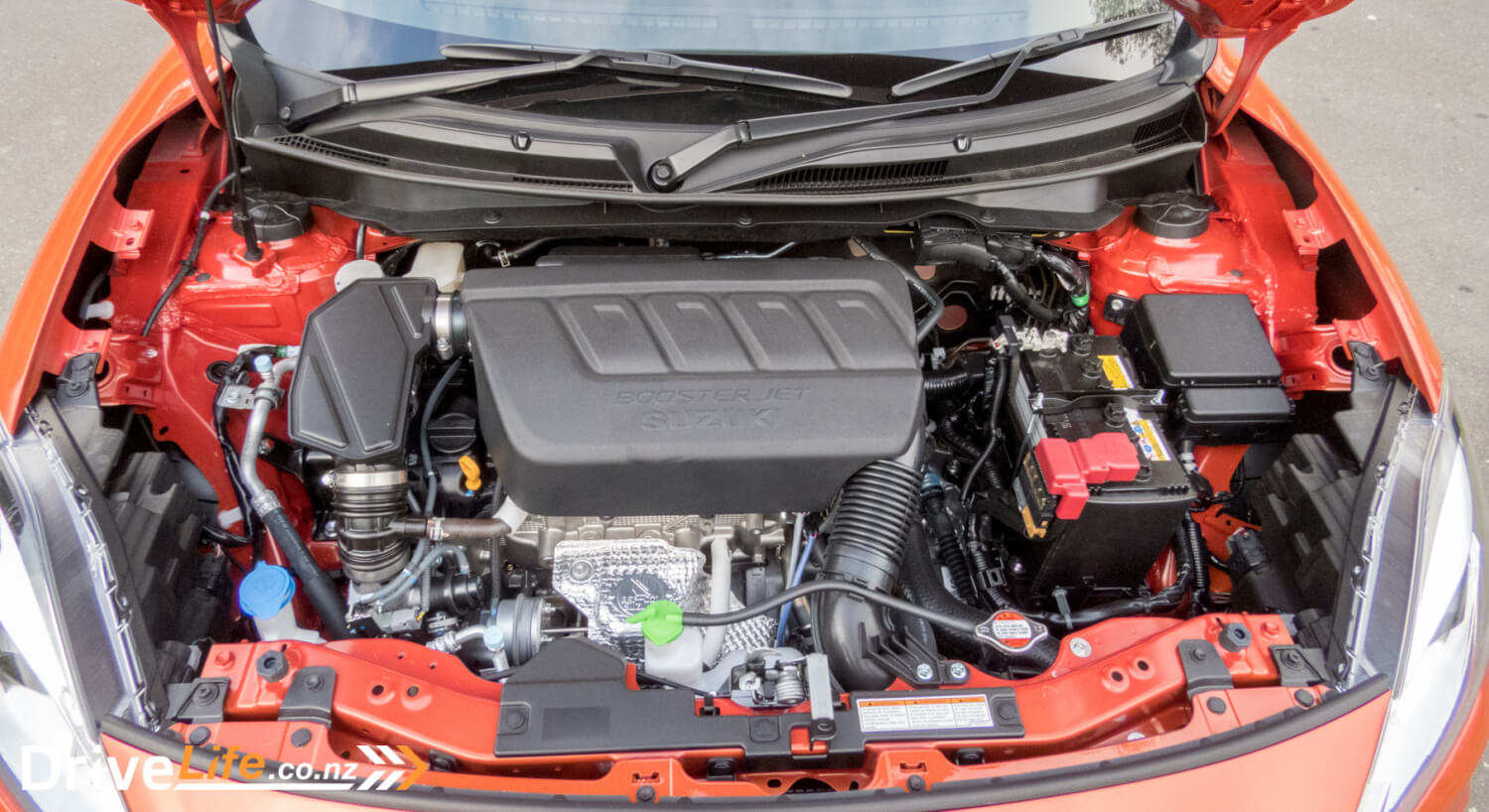
Give the right pedal a boot-full from a standstill, the Swift Sport will spin-up its wheels. Heck, I even saw the traction control light-flicker when driving with a car-load of mates, and we aren’t exactly the size of horse jockeys.
But don’t get the impression that the Swift’s power is mismanaged – it’s nothing like that at all. In fact, Suzuki’s booster-jet engine delivers its power smoothly and quietly. The power curve is linear, plus there’s loads of torque available across a wide band of the low to mid rev-range.
It pulls consistently and convincingly, no matter the gear you’re in. Sure, it’s no rocket-ship, but even I was surprised by how quickly the Swift Sport can displace itself.
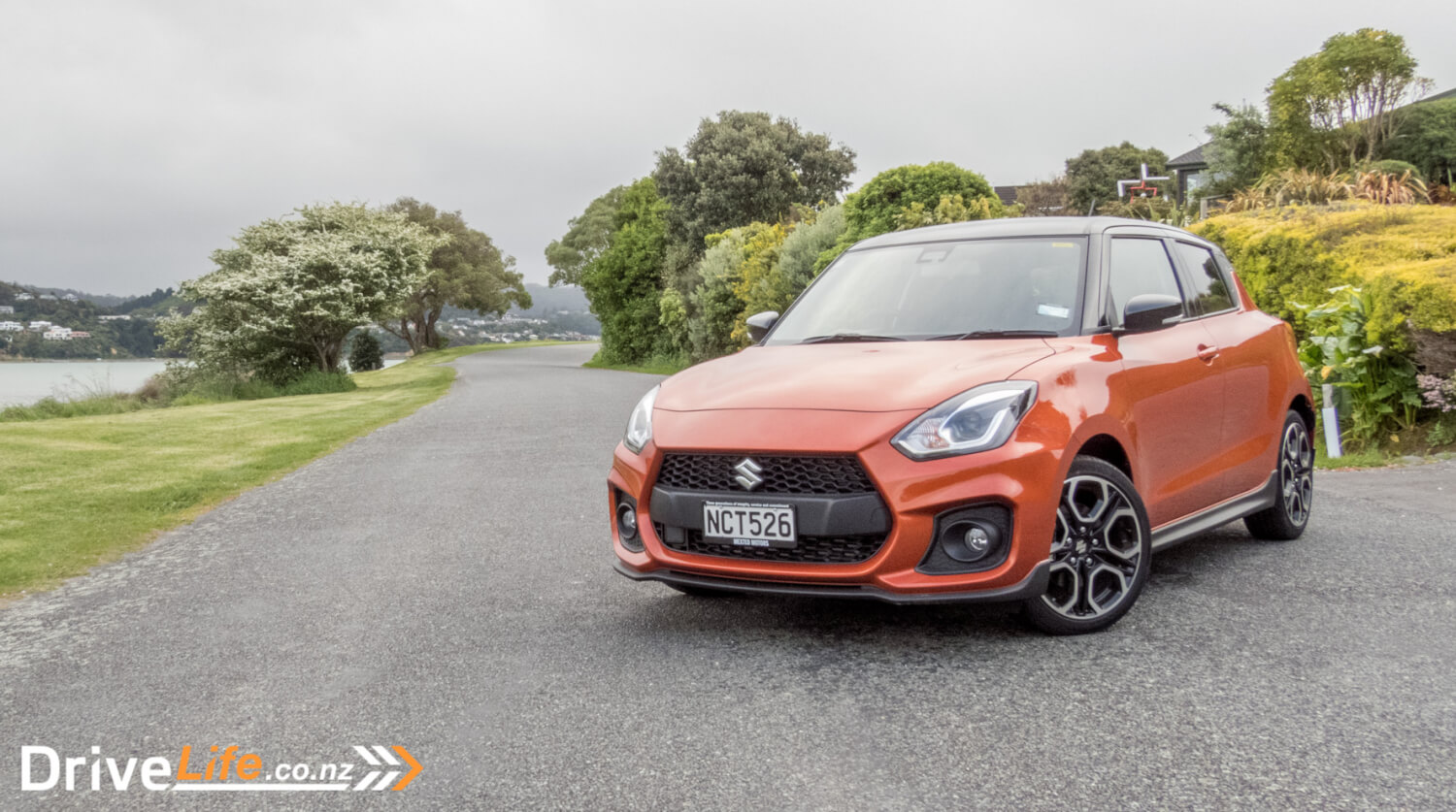
Overall, this is an excellent engine, but what about it’s downsides? Because the powerplant is a bit ‘cut-and-paste’ with the rest of the Suzuki range, my main critique is that it’s not the most charismatic engine out there. Also, the linear power delivery meant I wasn’t seeking-out any particular rev-range to exploit exciting parts of the power curve.
Perhaps some of this powertrain blandness is also down to the choice of gearbox. Don’t get me wrong, I have zero complaints with the Swift Sport’s 6-speed automatic box. Although, when Fred had his Swift, it was a manual. Afterwards, he came away a staunch advocate for the Swift Sport. I suspect you’ll have more fun in manual, even though the majority will be sold as an automatic.
There’s also a noteworthy absence of a good exhaust note, or any silly whooshy turbo noises.
So, perhaps the Swift Sport doesn’t offer the fully-fledged hot-hatch experience that we’re spoiled with today. But let’s be honest, any of these qualities are a tall order for any hatchback, yet alone one with a low $30,000 price-tag.
All of this simply means that the Swift Sport is still within the spectrum of the economy hatch versus that of a rabid modern hot-hatch. However, I’d argue that it’s all part of the Swift Sport’s genius.
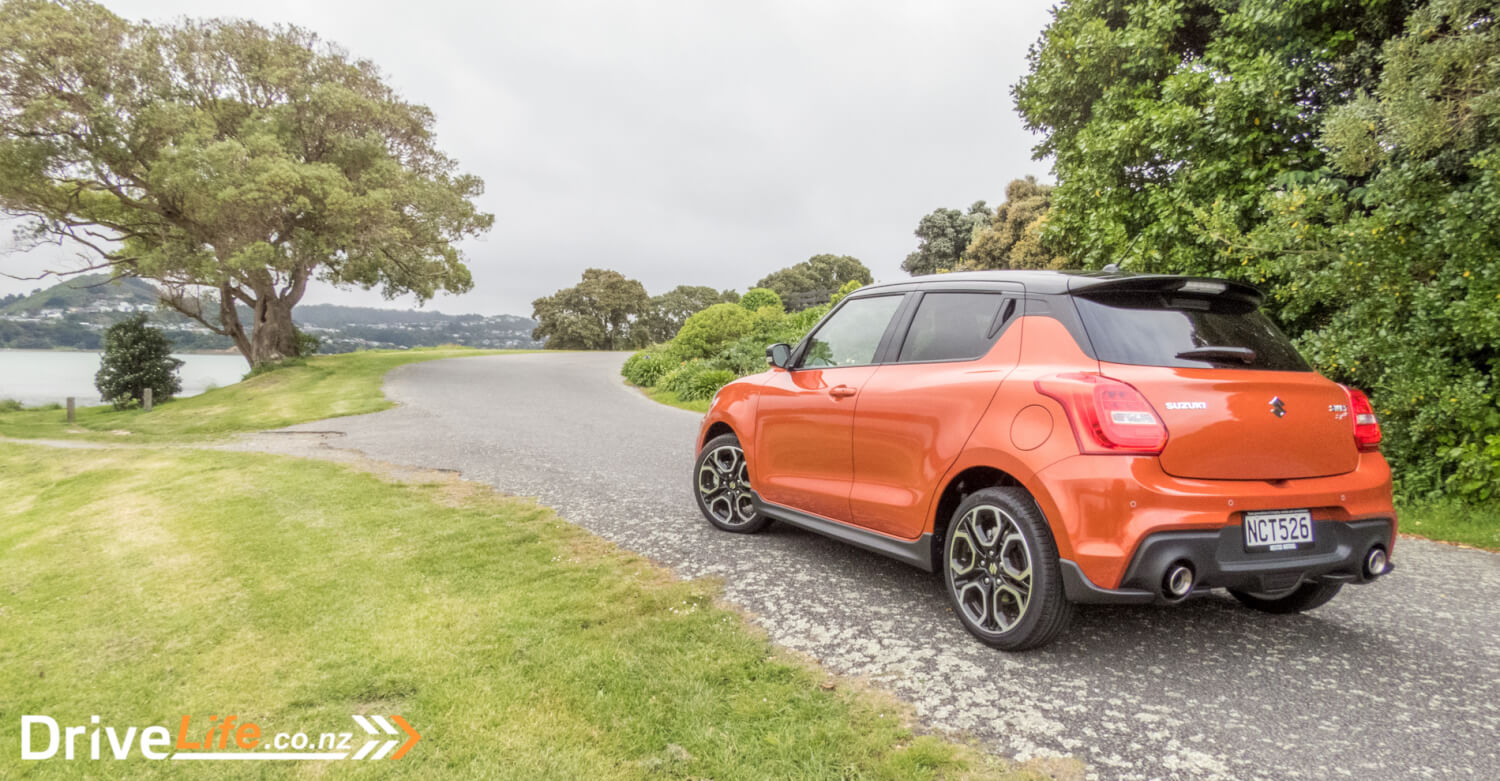
Drive the Swift Sport to the supermarket; it behaves like an economy hatchback. It’s easy to park, it’s good on gas, and you can fit the groceries and adults in the back.
Find yourself on a twisty section of state highway, and you can have some proper fun. The Swift Sport approaches a twisty road with child-like enthusiasm. It handles nicely, gripping well at the front-end, while body roll is gradual, pitching slightly through corners.
The steering is light, but not overly so. The ride is on the firmer side to aid with handling, but otherwise it’s perfectly fine for daily driving. The tyres are a set of Continental Conti Sport Contact 5’s, which are conventionally very good tyres. I do wonder how well the Swift Sport performs with different rubber, but I wonder this of many vehicles.
I do think it’s tyre consideration is relevant here though, as those spending 30-grand on a car mightn’t feel compelled to throw down some serious coin on tyres in the future. I suppose we’ll need to wait and see whether we should feel sorry for the bloke who buys one a decade later with mismatched tyres.
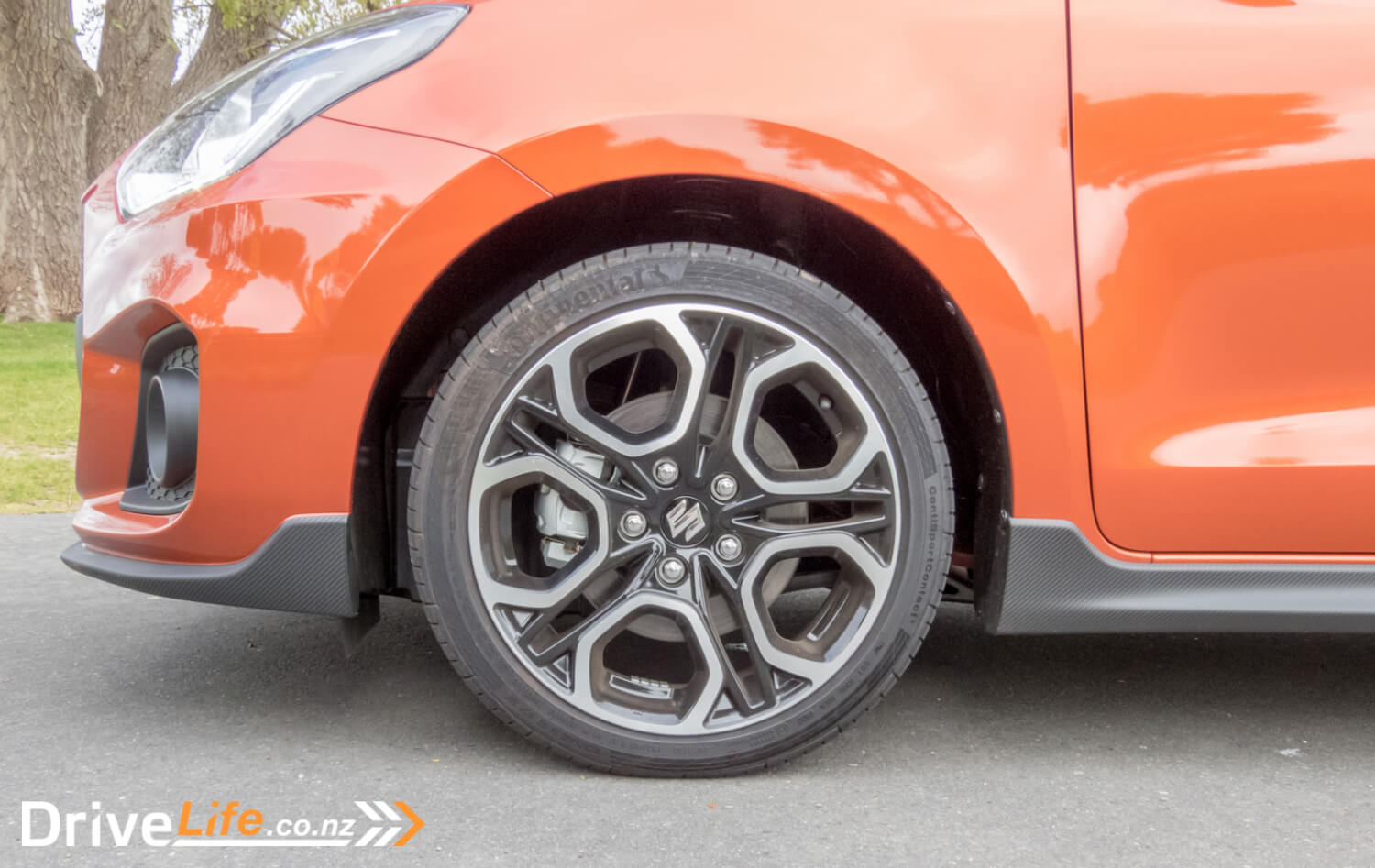
During my time with the Swift Sport, I achieved a fuel consumption of 6.6L/100kms, which is fairly close to the 6.1L/100km figure claimed by Suzuki. There are two considerations regarding fuel – firstly, it runs 95 Octane, but most turbocharged cars do these days, and secondly, the Swift Sport’s fuel tank is quite small at 37L. Although you aren’t actually consuming that much fuel, you may feel like you’re stopping more often than not to brim the tank. Keep it in mind for longer driving stints.
An important part of the Swift’s package relates to its safety tech. For the 2020 model, this is where the majority of the changes were made. It’s also the likely justification for Swift Sport’s $1,490 base price increase.
Blind-spot monitoring, rear cross-traffic alert, and rear parking sensors are all now standard features. All of these features work as expected, without any quirks nor being overly-sensitive, unlike some competitors *cough* Toyota Yaris. Suzuki also added a digital speed read-out via the centre screen, addressing one of our complaints with the previous model year.
Even before the changes, we were impressed that the Swift Sport offered Adaptive Cruise Control back in 2018. Few cars in the $30,000 price bracket can boast this feature, and it’s still impressive even today in 2021. The only drawback is that it only operates down to 30kph – you can’t win em all.
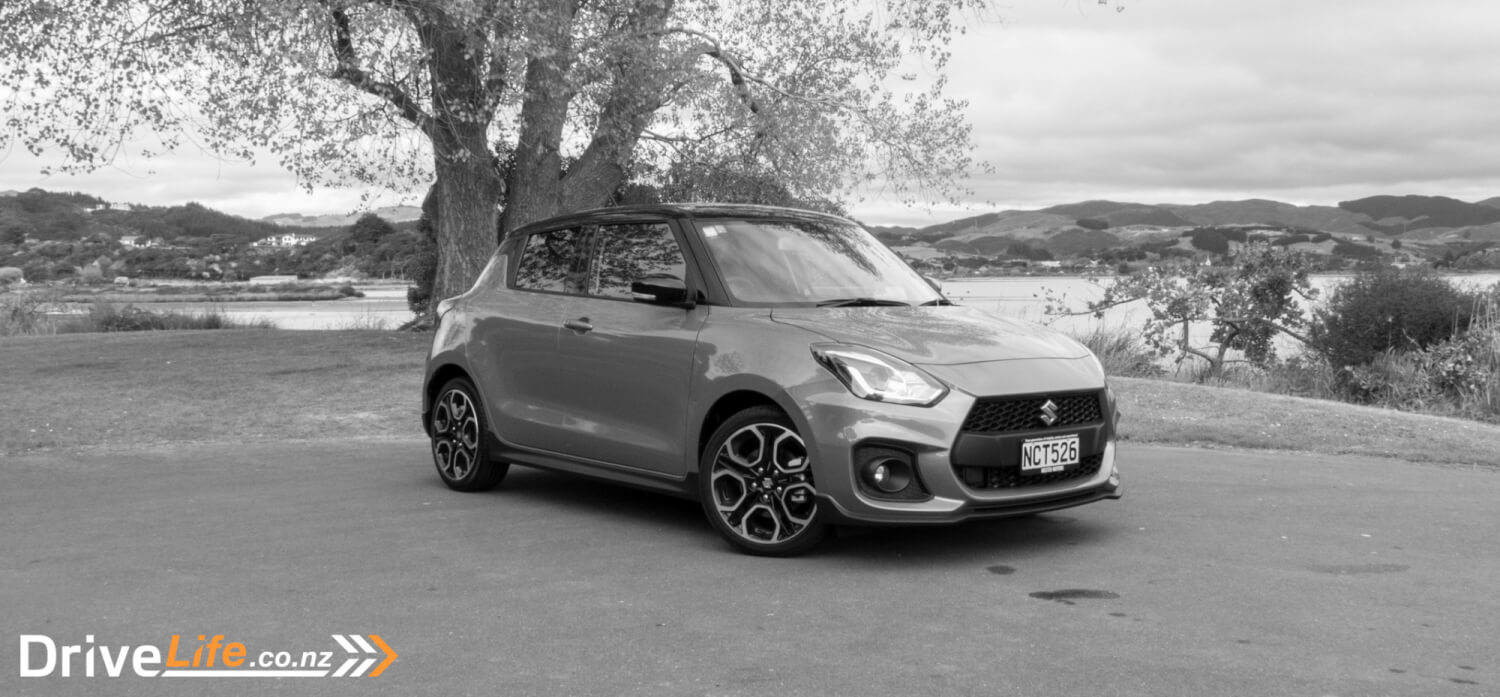
What’s The Competition For The 2021 Suzuki Swift Sport?
| Brand/Model | Engine | Power/ Torque kW/Nm | Economy, L/100km | Seats | Boot Space, Litres | Price |
| Ford Puma | 1.0-litre, 3-cylinder petrol turbo | 92kW/170Nm | 5.3 | 5 | 410 | $34,990 |
| Volkswagen Polo R-Line | 1.0-litre, 3-cylinder petrol turbo | 85kW/200Nm | 4.8 | 5 | 351 | $33,990 |
| Toyota Yaris ZR | 1.5-litre 3-cylinder petrol | 88kW/145Nm | 4.9 | 5 | 270 | $30,990 |
| Skoda Fabia Monte Carlo | 1.0-litre, 4-cylinder petrol turbo | 81kw/200Nm | 4.8 | 5 | 330 | $29,990 |
| Suzuki Swift Sport | 1.4-litre, 4-cylinder petrol turbo | 103kW/230Nm | 6.1 | 5 | 265 | $29,990 |
| Kia Rio GT-Line | 1.0-litre 3-cylinder petrol turbo | 74kW/172kW | 5.7 | 5 | 325 | $29,990 |
| Honda Jazz RS Sport | 1.5-litre, 4-cylinder petrol | 97kW/155Nm | 5.6 | 5 | 359 | $27,490 |

2021 Suzuki Swift Sport – Specifications
| Vehicle Type | 5-door small hatchback |
| Starting Price | $29,990 |
| Price as Tested | $31,990 |
| Engine | 1.4-Litre turbocharged 4-cylinder petrol engine |
| Power, Torque (kW/Nm) | 103/230 |
| Transmission | 6-speed Automatic |
| Spare Wheel | None |
| Kerb Weight, Kg | 990 |
| Length x Width x Height (mm) | 3890 x 1735 x 1495 |
| Cargo Capacity, litres | 265/579 |
| Fuel tank Capacity, litres | 37 |
| Fuel Economy, L/100km | Advertised Spec – 6.1 Real-World Test – 6.6 |
| Towing Capacity Kg, unbraked/braked | N/A |
| Turning circle, metres | 10.2 Small: 6-10m / Medium 10-12m / Large 12m+ |
| Warranty | 3 years/100,000km New Vehicle Warranty 5 years Powertrain Warranty 5 years Roadside Assist |
| ANCAP Safety Ratings | 5 Star |


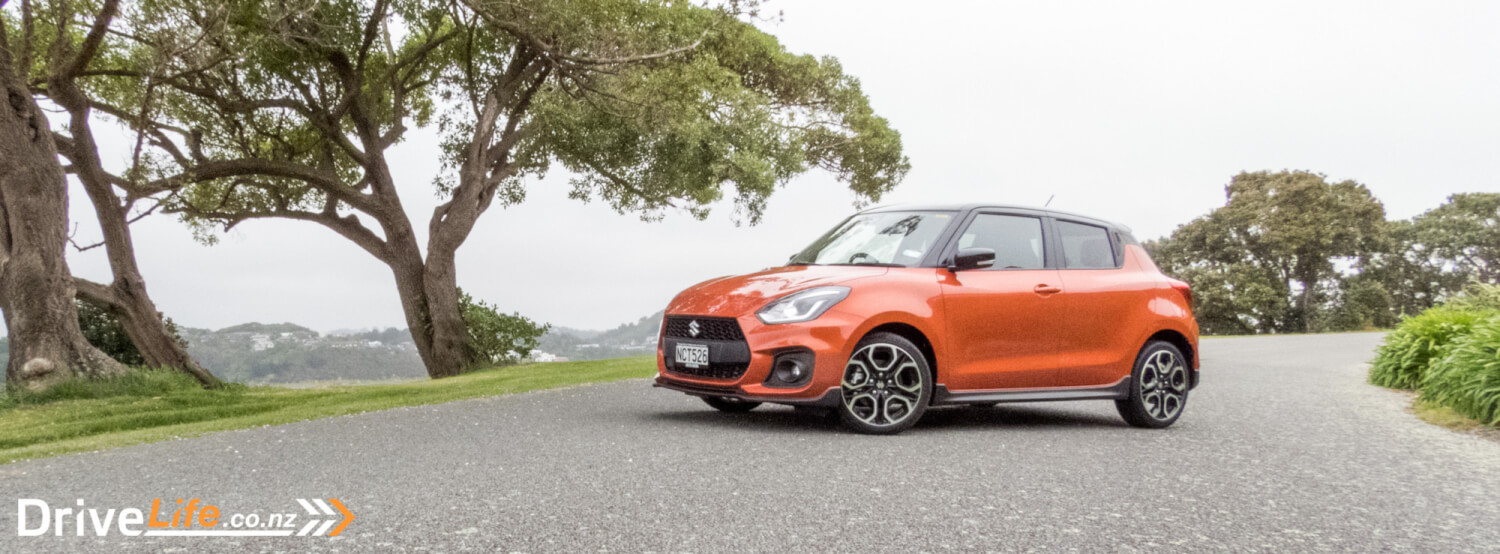

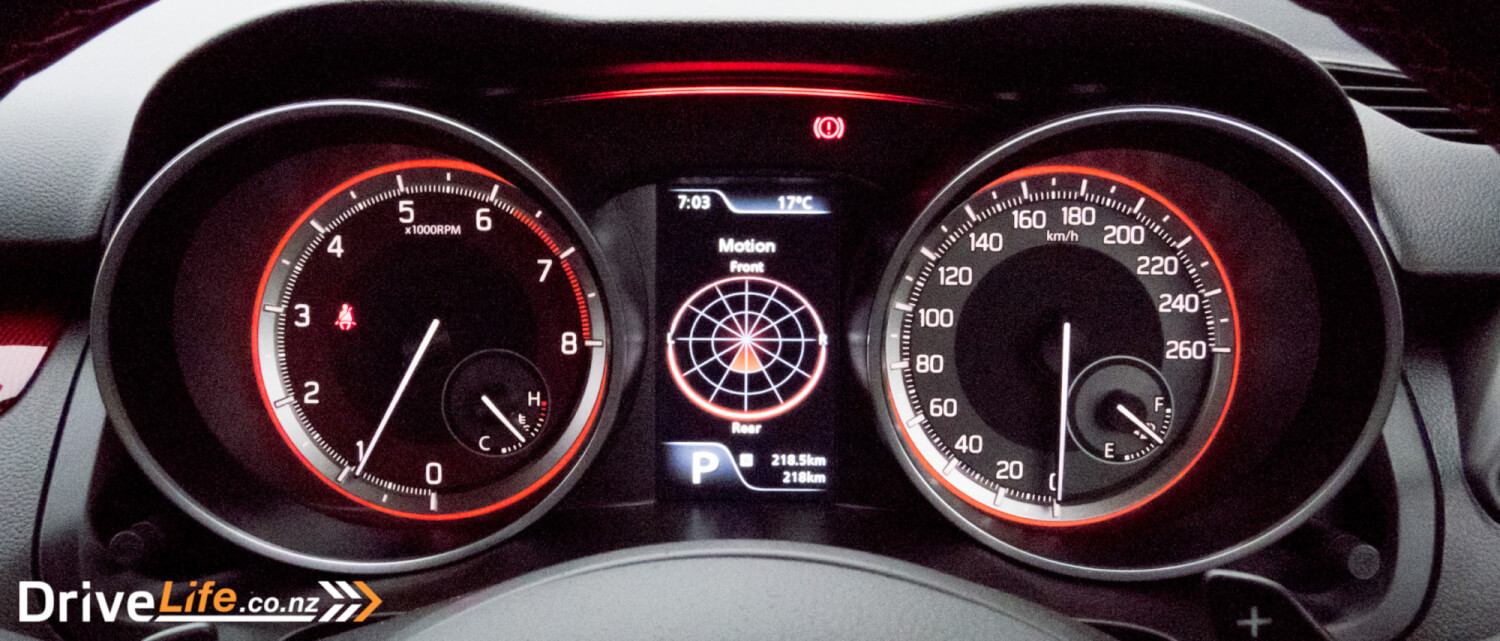
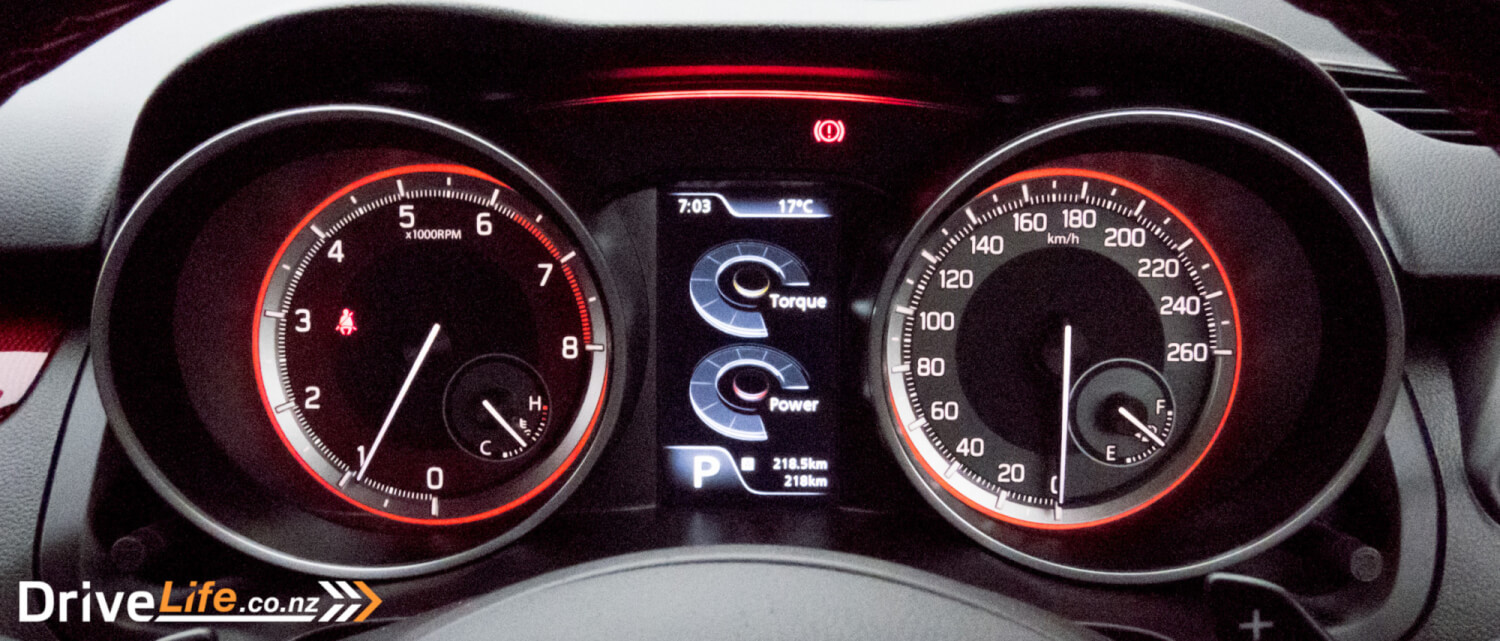

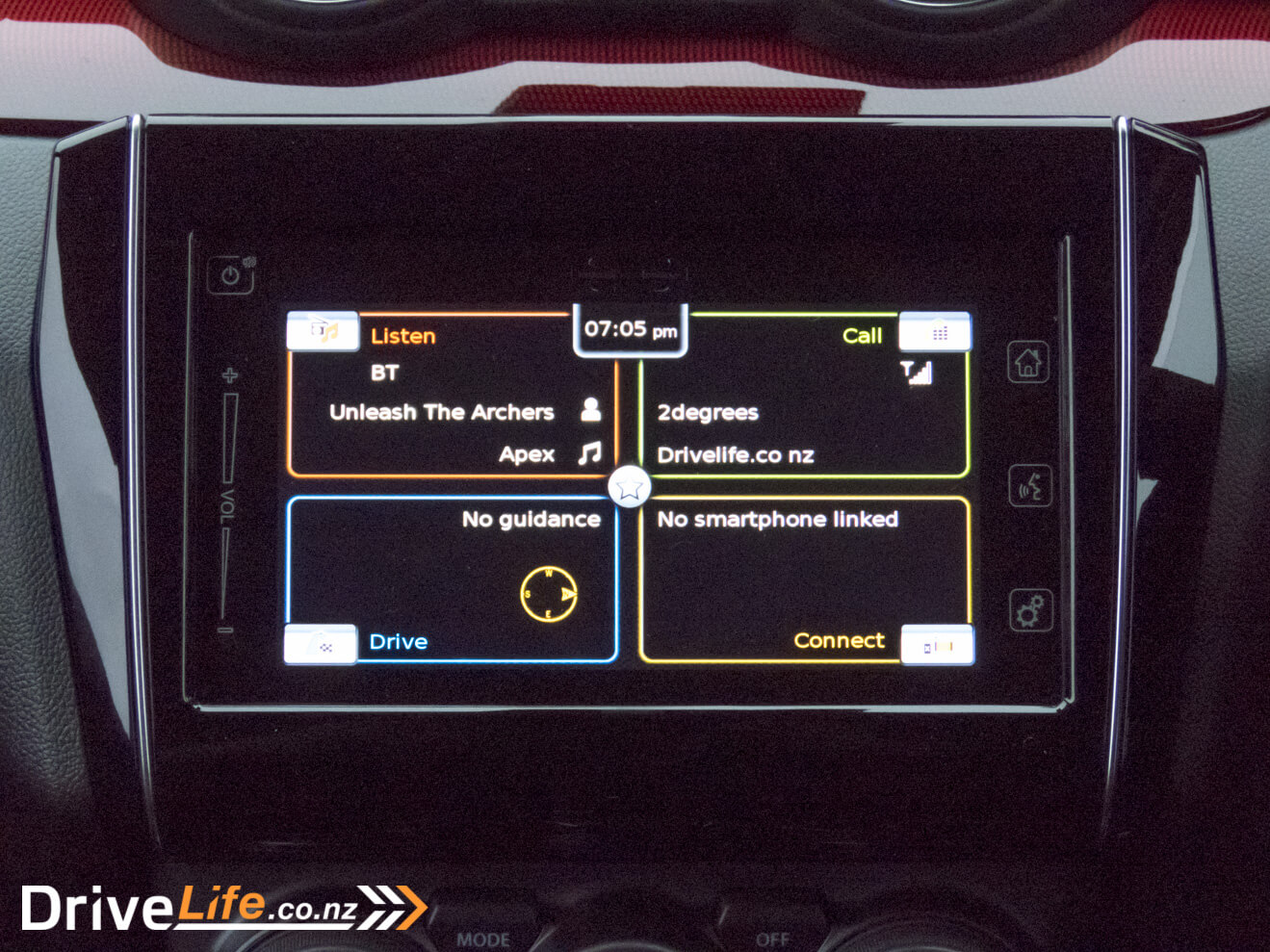
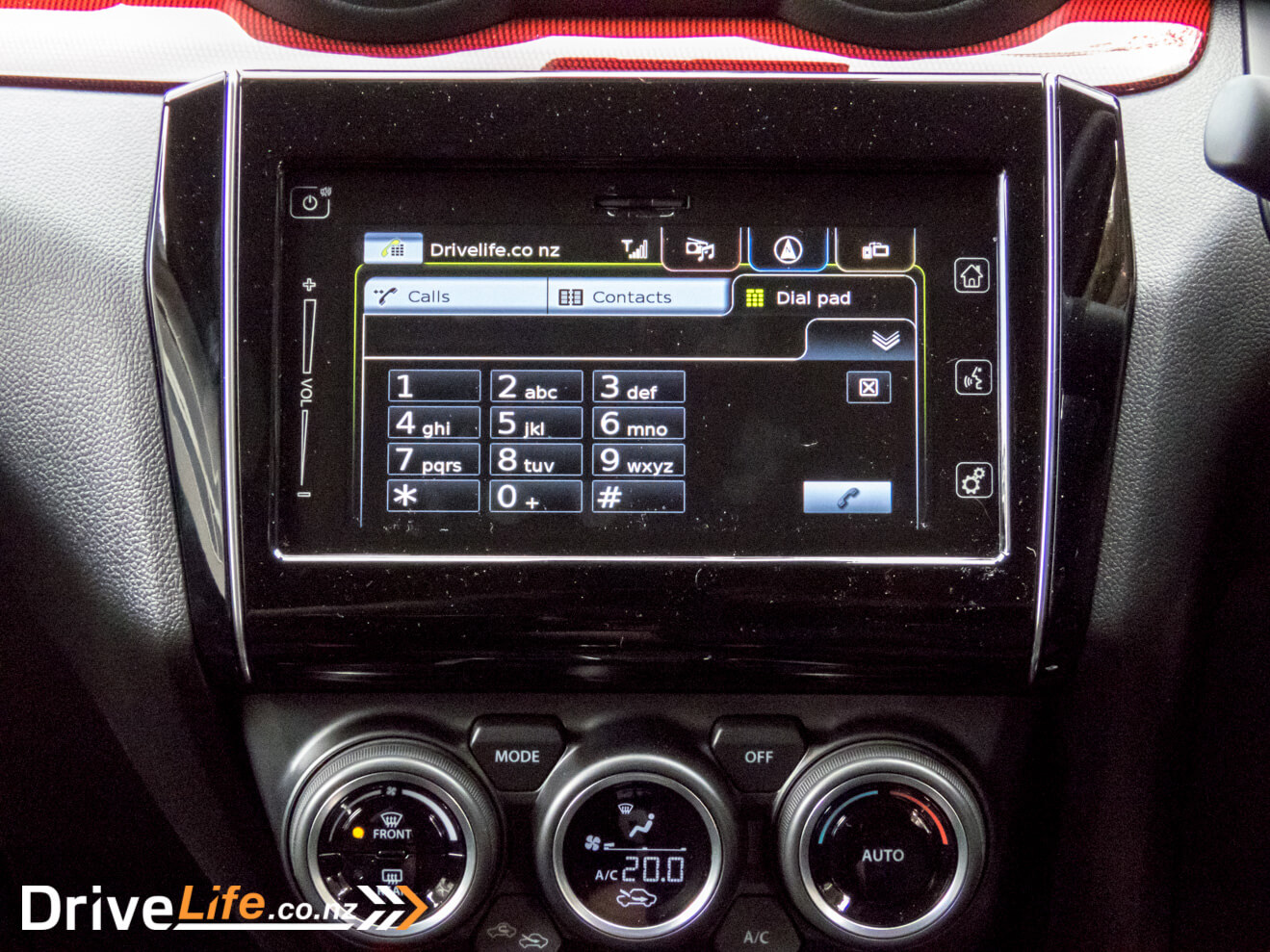
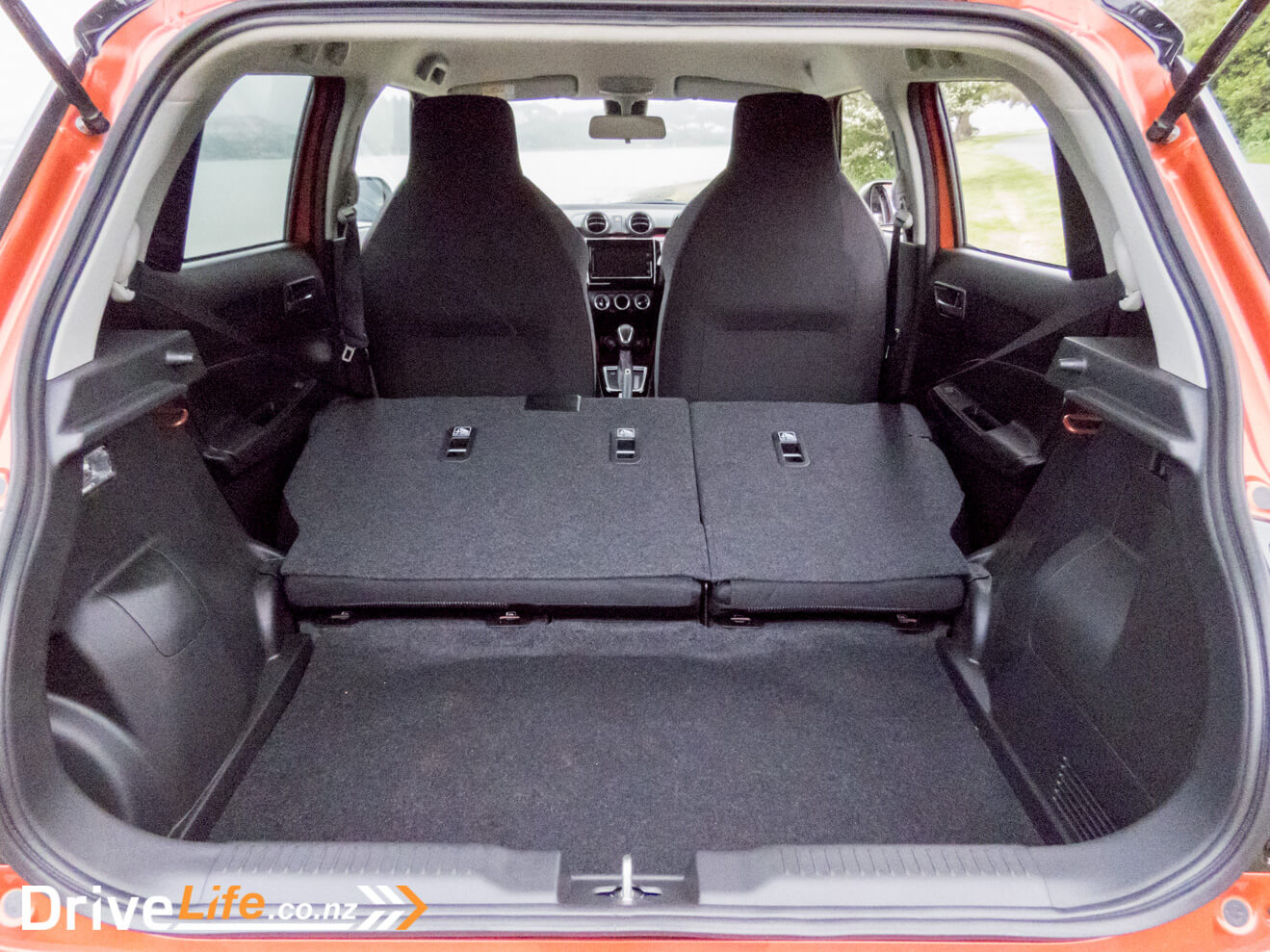
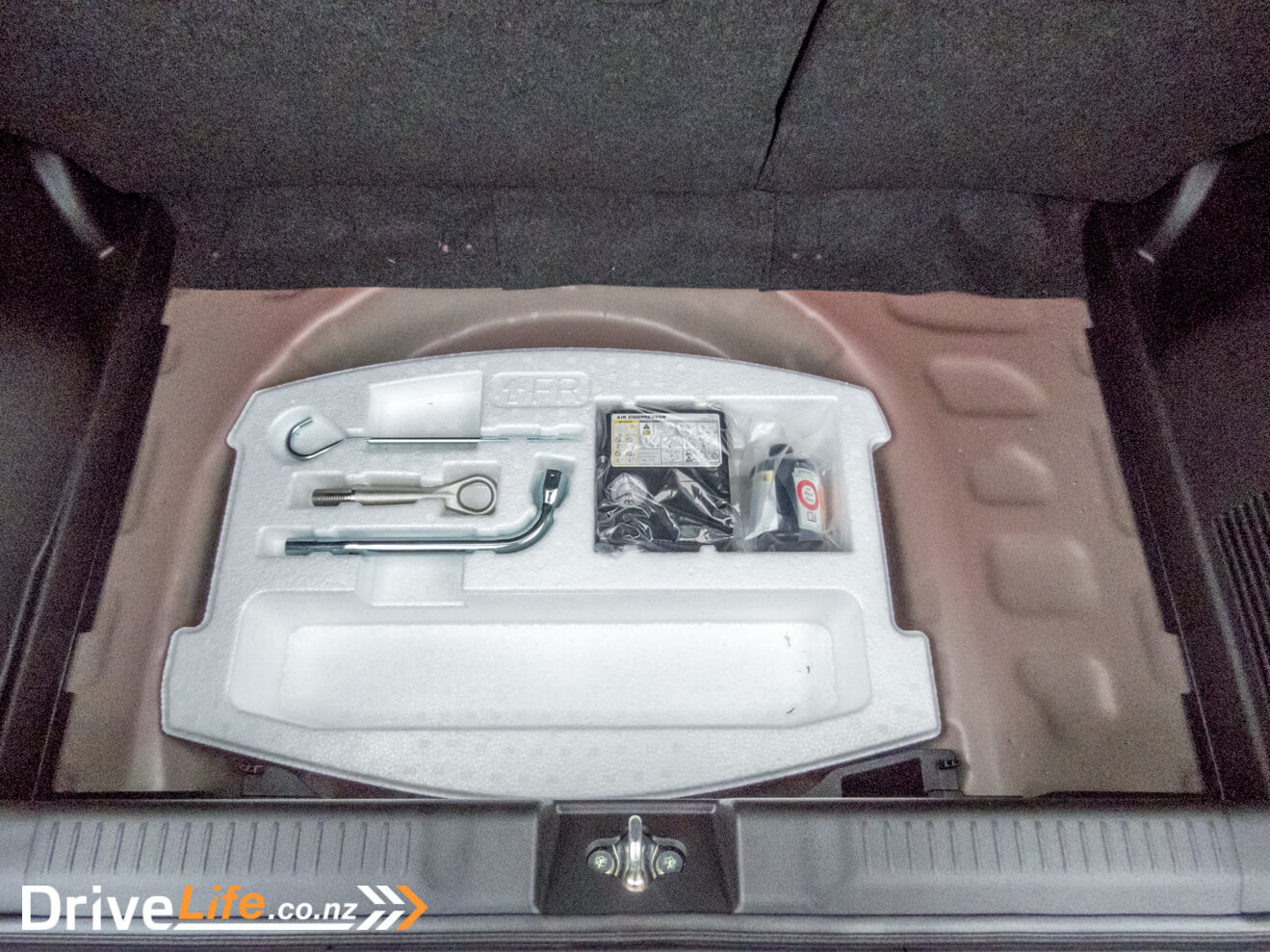











































Just bought one of these for my wife….. main attraction was the Flame Orange colour for her…. so we now have a distinctive, colourful vehicle to punt around! Car is everything you have described in your review, and has definitely met expectations. Unlike the 2018 S-Cross Prestige it replaces, which was a disappointment from day 1. Like all manufacturers, Suzuki has some models that are better than others. This one is a pearler!
Complete agree Steve. Suzuki has hit a home run with this one.
Thanks for the comment!